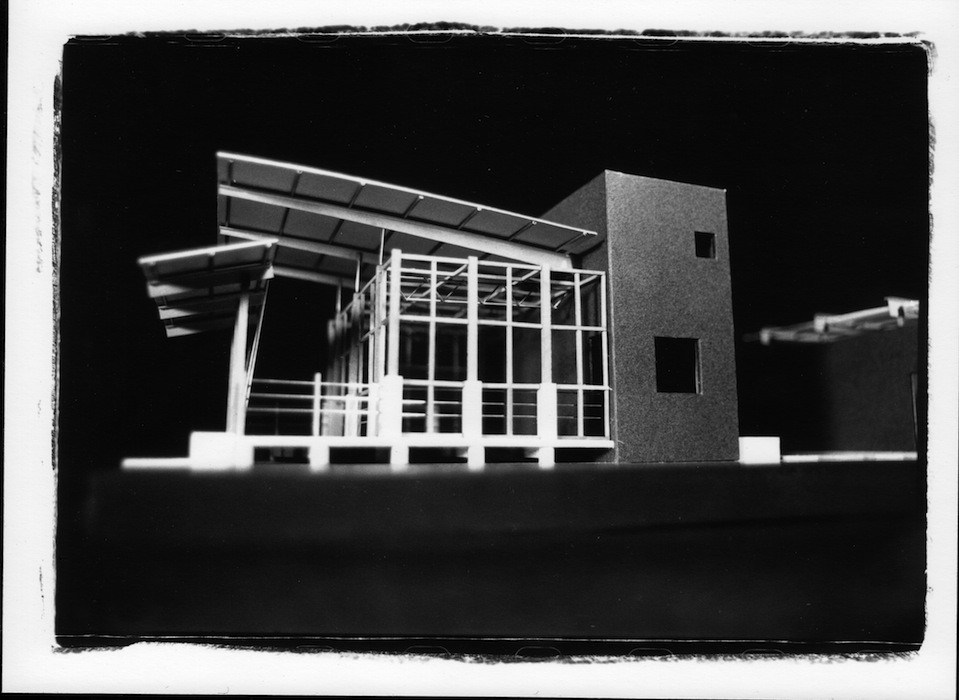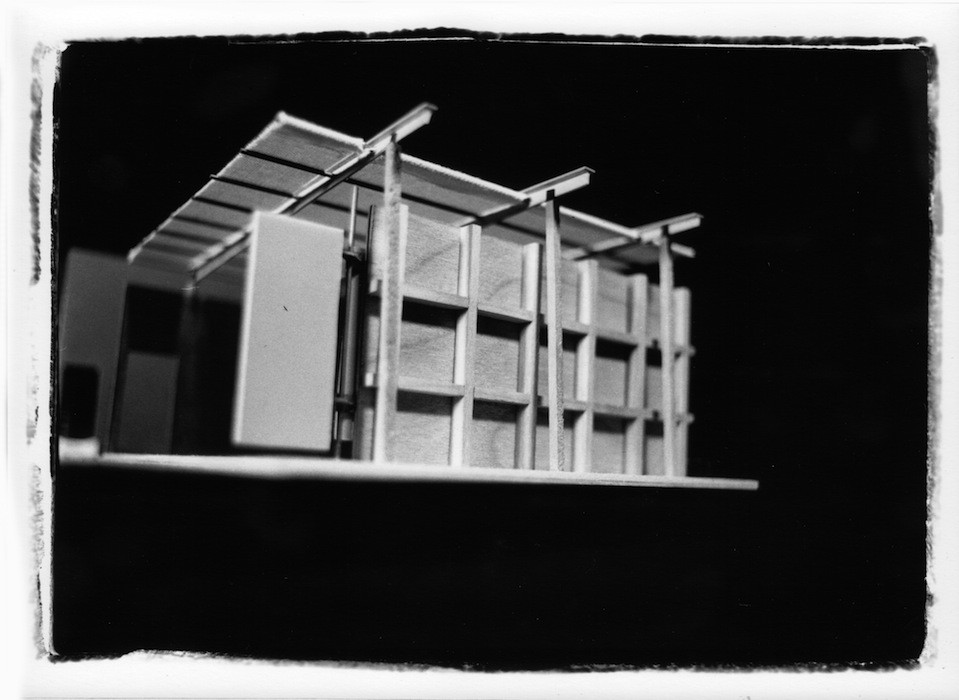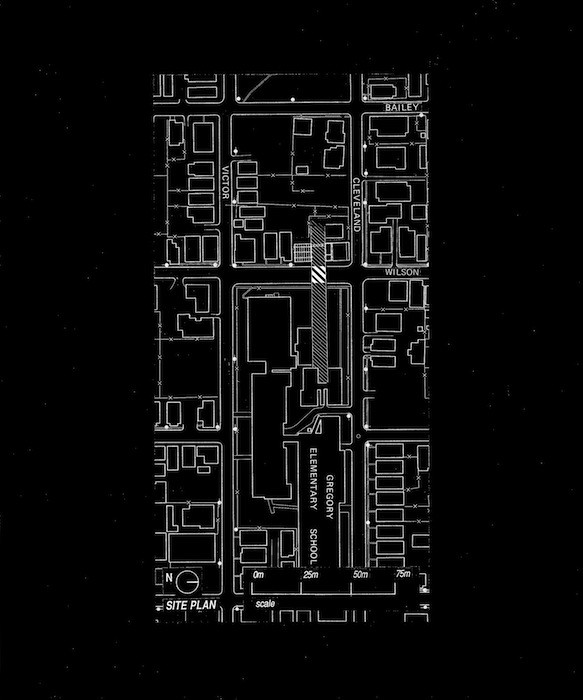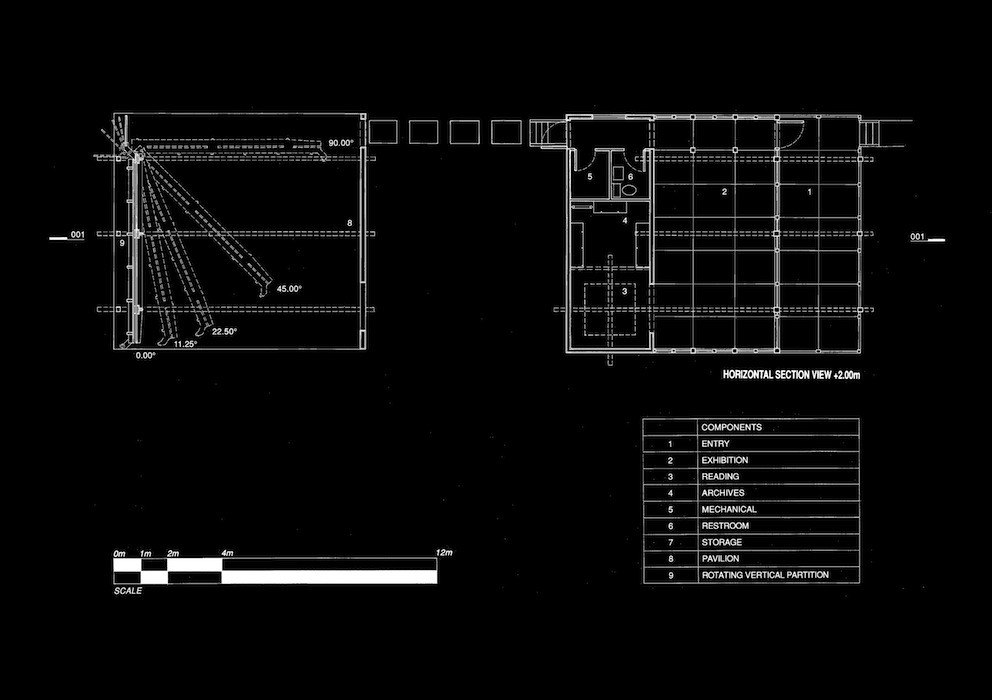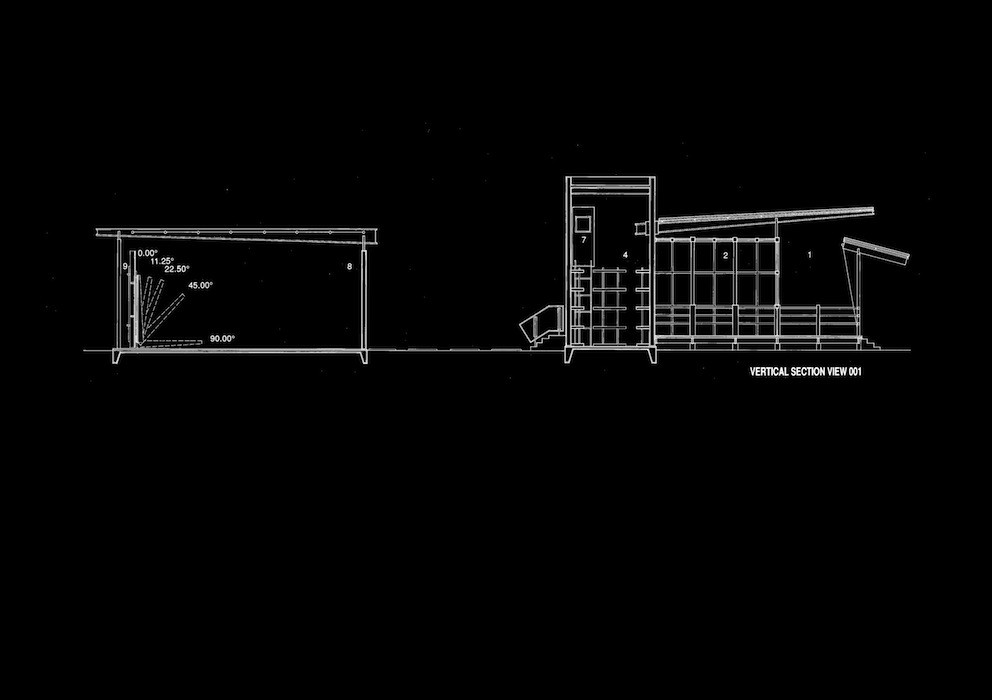archive pavilion
critic: Dietmar Froehlich
SITE: Located in the shadows of downtown Houston's corporate playground of oil-financed glass towers, Freedman's Town has the distinction of being the city's oldest historically black neighborhood. This neighborhood, just like most inner city neighborhoods across America, is suffering from acute dysfunction. The site is located on a strategic point amidst an envisioned community complex, occupying the corner of a future neighborhood park, and across the street from a proposed community center housed in the defunct Gregory Elementary School.
PROGRAM: Considering the primary reason the freed slaves were deeded land in this location was due mostly to the fact that the land was considered undesirable at the time, it is ironic that the area is now coveted by local developers with visions of upscale condos and retail strips. One of the oft-forgotten side effects of gentrification is the large scale displacement and division of a community into voiceless and powerless individuals left to fend for themselves. The Archive-Pavilion is seen as a litmus test designed to measure what sense of community remains and hopefully sustain and cultivate it.
STRUCTURE: The building's organization is generated from the "shot-gun house" typology prevalent in the neighborhood. Employed as a contextual device, it is not the intention to literally appropriate the typology and its symbolic content as much as it is to use it to occupy the site with some degree of empathy.
ARCHIVE: The Archive is divided into two components:
Exhibition - A glass enclosed space with cantilevered roof serves as an area to display temporary exhibits.
Archive - A discreet space housed in the concrete block mass contains important historical documents relevant to the community and a place to study them.
PAVILION: The pavilion is a space used for staging community events. Integral to this space is the rotating partition wall (stage) which by its ability to rotate along two axes allows it to address and accommodate a variety of events. The wall is a kinematic device whose dual action in movement is intensified by its dual action as a spatial modulator and ultimately as a transmitter of culture.
